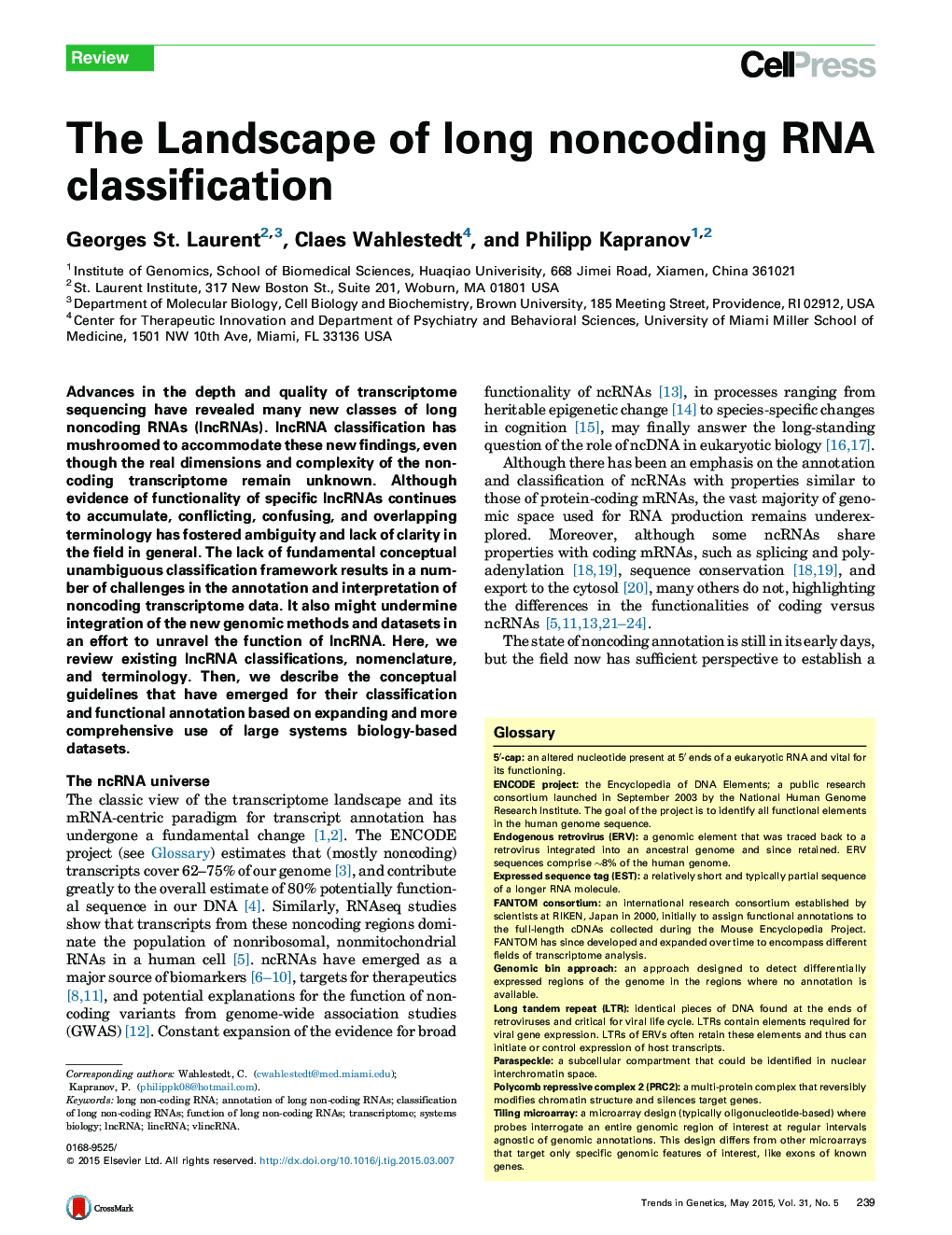| Article ID | Journal | Published Year | Pages | File Type |
|---|---|---|---|---|
| 2824658 | Trends in Genetics | 2015 | 13 Pages |
•ncRNAs constitute the majority of transcriptional output of the human genome.•Lack of functional knowledge of most of ncRNAs has led to classification with a number of issues.•A new classification is emerging rooted in unbiased whole-genome surveys of RNA.•The new classification should allow for easy data integration across multiple experiments.
Advances in the depth and quality of transcriptome sequencing have revealed many new classes of long noncoding RNAs (lncRNAs). lncRNA classification has mushroomed to accommodate these new findings, even though the real dimensions and complexity of the noncoding transcriptome remain unknown. Although evidence of functionality of specific lncRNAs continues to accumulate, conflicting, confusing, and overlapping terminology has fostered ambiguity and lack of clarity in the field in general. The lack of fundamental conceptual unambiguous classification framework results in a number of challenges in the annotation and interpretation of noncoding transcriptome data. It also might undermine integration of the new genomic methods and datasets in an effort to unravel the function of lncRNA. Here, we review existing lncRNA classifications, nomenclature, and terminology. Then, we describe the conceptual guidelines that have emerged for their classification and functional annotation based on expanding and more comprehensive use of large systems biology-based datasets.
